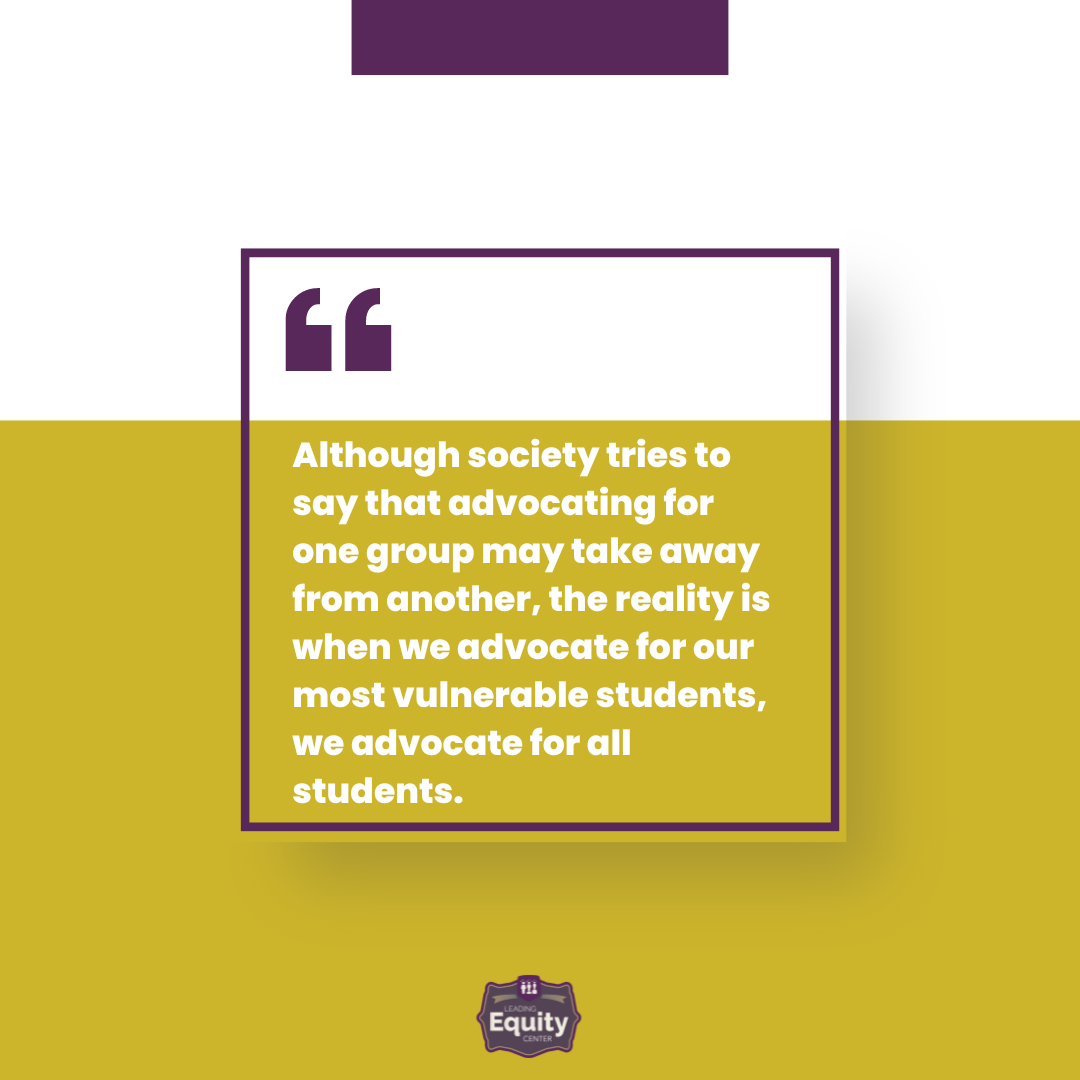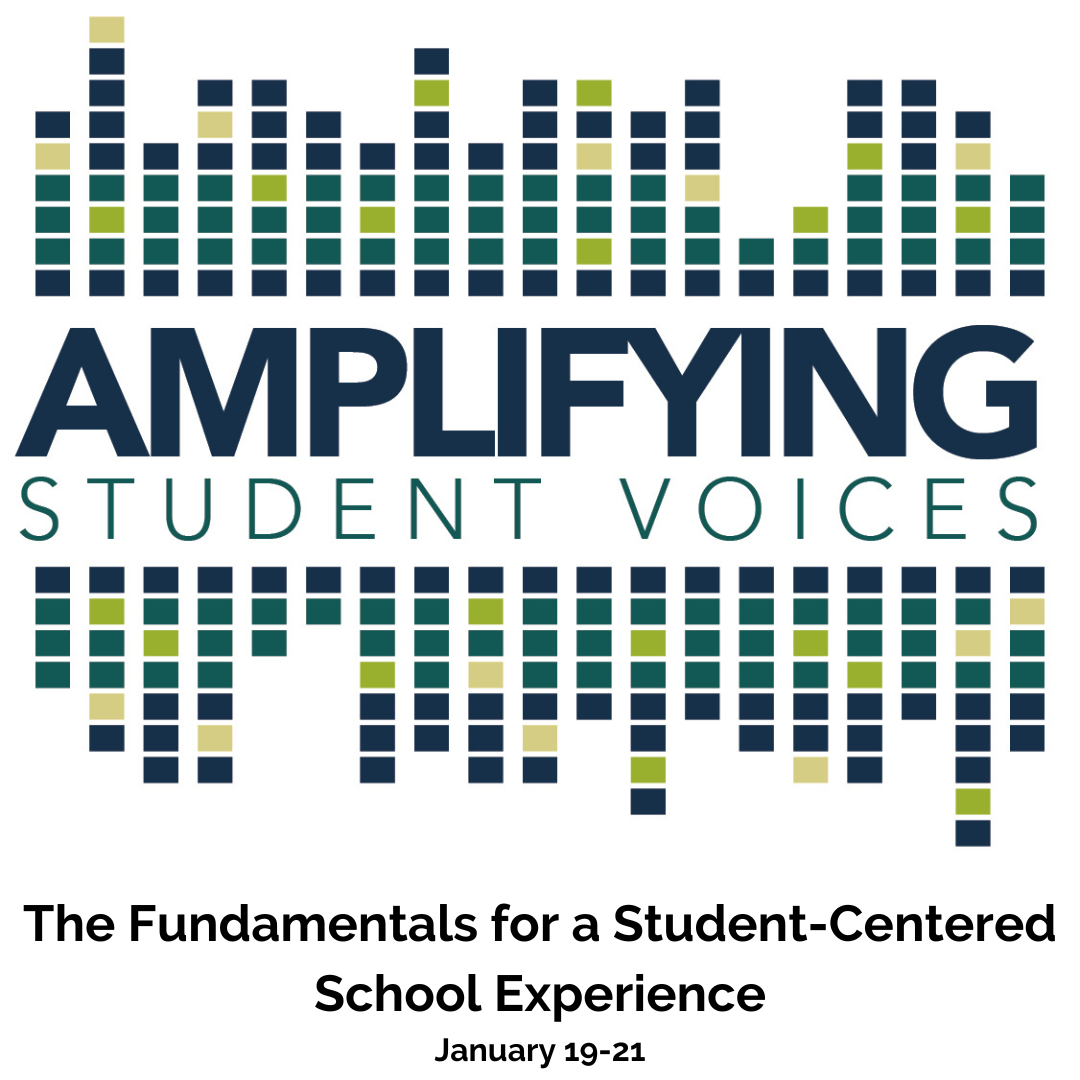We must prioritize improving the quality of education overall and addressing previous gaps

Hey Advocates,
So, I decided to dress up for Halloween this week. Don't judge, but I hadn't worn a costume since I was a kid. My two little one's made me do it, the chronicles of a single parent  06!!!
06!!! 
Overall, it's been a great week since my last post. Shout out to Idaho State University as I was the opening and closing keynote speaker for their Diversity, Equity, and Inclusion Conference. I was honored to facilitate the Leading Equity Book Study with Forest Grove Middle School and keynoting St. Joseph's University's Diversity and Inclusion "Building a Better Tomorrow Through Diversity" event.
If you are looking for keynotes or workshops in-person or virtual, take a look at the Leading Equity Center's services, and let's chat! You can also book a FREE 30-minute consultation with me regarding your upcoming events/projects. Let's get to this week's topic.
The COVID-19 pandemic has undoubtedly affected how our students learn. In the United States, the National Assessment of Educational Progress (i.e., the nation’s report card) reported math scores “were especially devastating, representing the steepest declines ever recorded.” Eighth-grade math scores in almost every state across the country fell. Reading scores were also affected, following a continual nationwide downward shift pre-pandemic, as more than half of state scores fell behind.
Yes, pandemic gaps should be addressed; however, when creating sustainable and equitable results, we must prioritize improving the quality of education overall and addressing previous gaps.
Dr. Adriana Villavicencio, Assistant Professor of Education at the University of California - Irvine, wrote Why schools’ going back to ‘normal’ won’t work for students of color. She states, “Rather than focus only on trying to close pandemic-related gaps, schools could seek to more substantially improve the quality of education they offer, particularly for students of color, if they want to achieve equitable and sustainable results.” I could not agree more.
Students of color are seen through a deficit perspective by their teachers, schools, districts, etc. They are quickly labeled as “challenging” compared to their white counterparts. Rather than schools and districts meeting them where they are to value and see them for who they are --- to truly appreciate what they bring to the classroom.
As a racial equity scholar whose research focuses on the inequities within minoritized communities of students and their families in K-12 education policy and school practice, Dr. Villavicencio has learned four important ways schools can improve.
- Classrooms that reflect the students they serve (i.e., race, ethnicity, and cultures) are necessary. They motivate students of color to succeed as they see themselves in the spaces they are a part of.
- The National Center for Education Statistics reports the teacher workforce is almost 80% white. Yet, research shows the long-term impact of having teachers of the same race have a higher probability of being high school graduates and enrolling in college.
- Connection, not control. Black and Latino students are disproportionately represented in school discipline as they “are more likely than their White peers to receive expulsion or out of school suspension as consequences for the same or similar problem behavior.” Hence the need for restorative justice programs and relationship-building to view students holistically and understand their stories outside of the classroom that inevitably impact their time inside the school.
- Equitable access to academic challenges. Research has shown that teachers are biased toward how they perceive Black and Latino students’ success, and their expectations of them differ from white and Asian students. This sentiment then contributes to the underrepresentation of Black and Latino students in gifted and talented programs, thus affecting their enrollment in courses of higher academic rigor. Schools must re-evaluate how they provide equitable access to academically rigorous systems and pathways for all students, not a select few.
- Teacher preparation and support are crucial as the United States continues to become racially and ethnically diverse. How are schools addressing these new contexts within their teacher preparation? How are districts prioritizing culturally responsive or culturally sustaining classrooms? How do they value the different funds of knowledge that students of color bring?

This work is not easy, it requires intention and effort. In January 2023, I'll be hosting my annual event, which is about Amplifying Student Voices.

We will discuss how we can prioritize our underrepresented students to empower them and equip ourselves with the tools necessary to keep them in the forefront. More details are coming soon!
Content created this week:
Show Highlights
- Being culturally responsive at home
- Book study
- What’s the point of the book study
- Classroom environments
- Facilitating a brave space
- Accountability outside of the book study time
- Pre and Post results
- After the book study
Last night, the Art of Advocacy was on as we discussed what it's like being a BIPOC educator in international schools. My guests were Kevin Simpson and Marla Hunter. Here's the replay. We are almost at 500 subscribers, which is half our goal of 1,000 by January 2023. Help us get there by following the channel.
as we discussed what it's like being a BIPOC educator in international schools. My guests were Kevin Simpson and Marla Hunter. Here's the replay. We are almost at 500 subscribers, which is half our goal of 1,000 by January 2023. Help us get there by following the channel.
That’s all this week,
- Sheldon
P.S. Here's a White Educator's review of the Leading Equity Book




